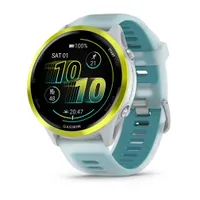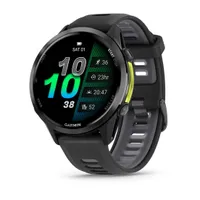I raced a 10K with the Garmin Forerunner 970 vs. Garmin Forerunner 570 — here’s the winner

The Garmin Forerunner 570 and Garmin Forerunner 970 are the new stars of the Garmin range, and both have impressed me during the weeks of testing I’ve done with both so far.
Both are among the best sports watches available, but both are also very expensive and there are Garmin watches that offer most of the same features for less.
To help see if the Forerunner 570 and Forerunner 970 are with their lofty price-tags, I wore both at the High Easter 10K, a local race in Essex, UK, to check their overall performance and compare them against one another.
The Garmin Forerunner 570 might be the best looking watch in the entire Garmin range thanks to its bright display and colorful bezel. It backs up its looks with reliably excellent sports tracking and training analysis, plus some useful smarts like music storage. It’s expensive for a watch that doesn’t offer offline maps though, which you get on the Garmin Forerunner 970 plus some design upgrades.
For $200 more than the Forerunner 570 the Forerunner 970 offers a more durable design thanks to the titanium bezel and sapphire crystal screen, and it also has a built-in flashlight. It also has offline maps and extra running stats, though some of these are only available if you pair it with the $169 Garmin HRM600 chest strap heart rate monitor.
I ran 33:17 at the race and both watches impressed with their accuracy — here are my key takeaways.
GPS Accuracy

The High Easter 10K takes place on open countryside lanes in Essex and as a result I expected highly accurate GPS tracks from both watches, which were both in the most accurate multi-band mode.
Both were indeed very accurate, with the GPS tracks being almost identical and sticking the exact route I ran. The Forerunner 570 logged 10.02km compared with 9.98km on the Forerunner 970.
I was able to run tight lines around most corners so I probably ran very close to the official 10K distance on the route, which has a UKA license as an officially measured course, so the Forerunner 570 was likely spot on.
Get instant access to breaking news, the hottest reviews, great deals and helpful tips.
Both watches were accurate for pacing each kilometer split though, which is the main thing I use a watch for in a race.
HR Accuracy
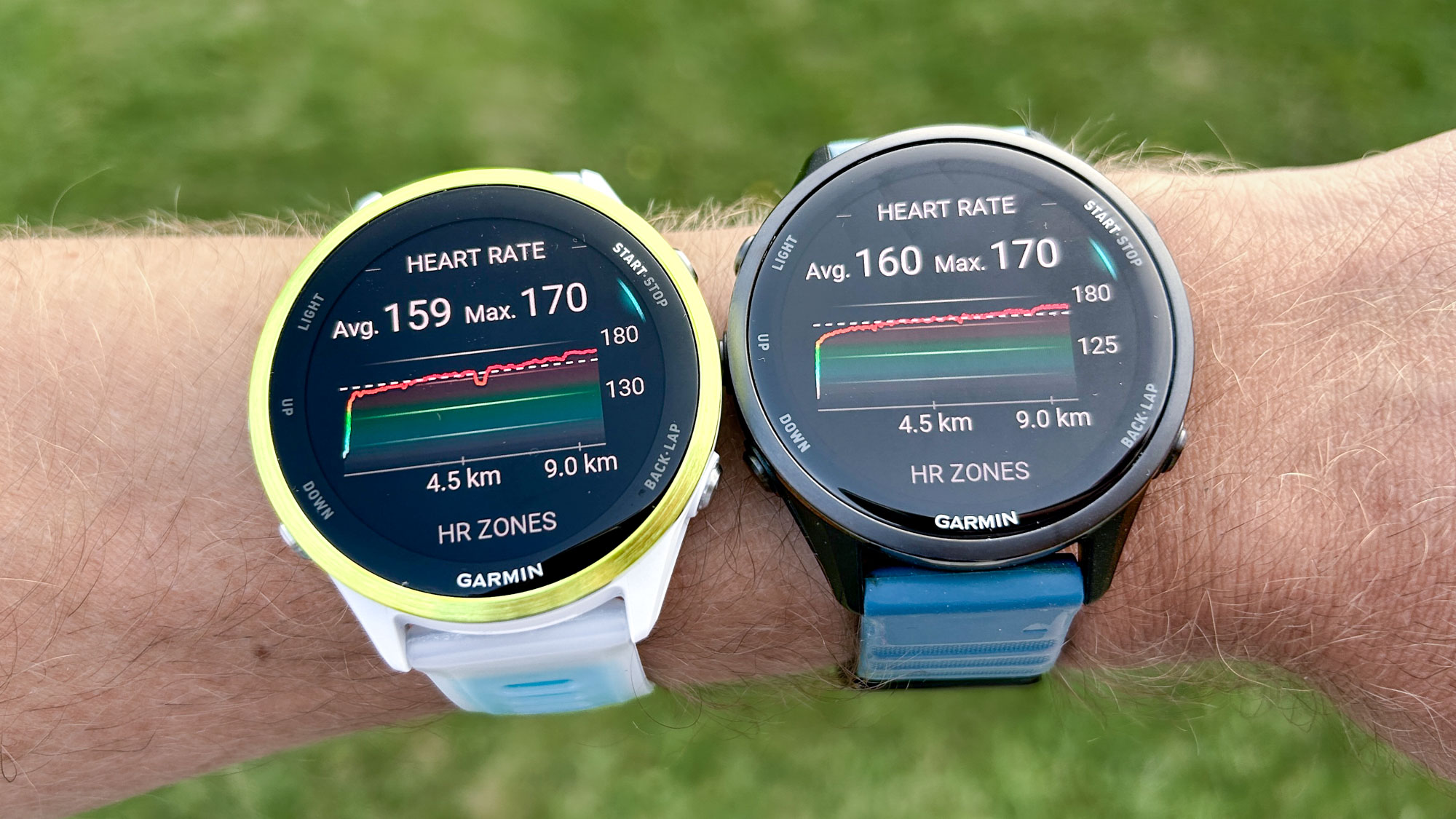
During the race the Forerunner 970 was getting its heart rate info from the Garmin HRM600 chest strap, which I had paired to the watch in order to get Garmin’s new step speed loss stats that are only available if you use the HRM600.
As a result I was only really testing the heart rate accuracy of the Forerunner 570, which did mostly line up closely with the HRM600’s reading’s throughout the race.

There was one error during the race where the Forerunner 570’s heart rate reading dipped erroneously. It also took a minute or two to get up to speed at the start of the race, which is something I expect to see with optical heart rate sensors, which aren’t as quick to track sudden changes in heart rate as chest straps.
Battery Life
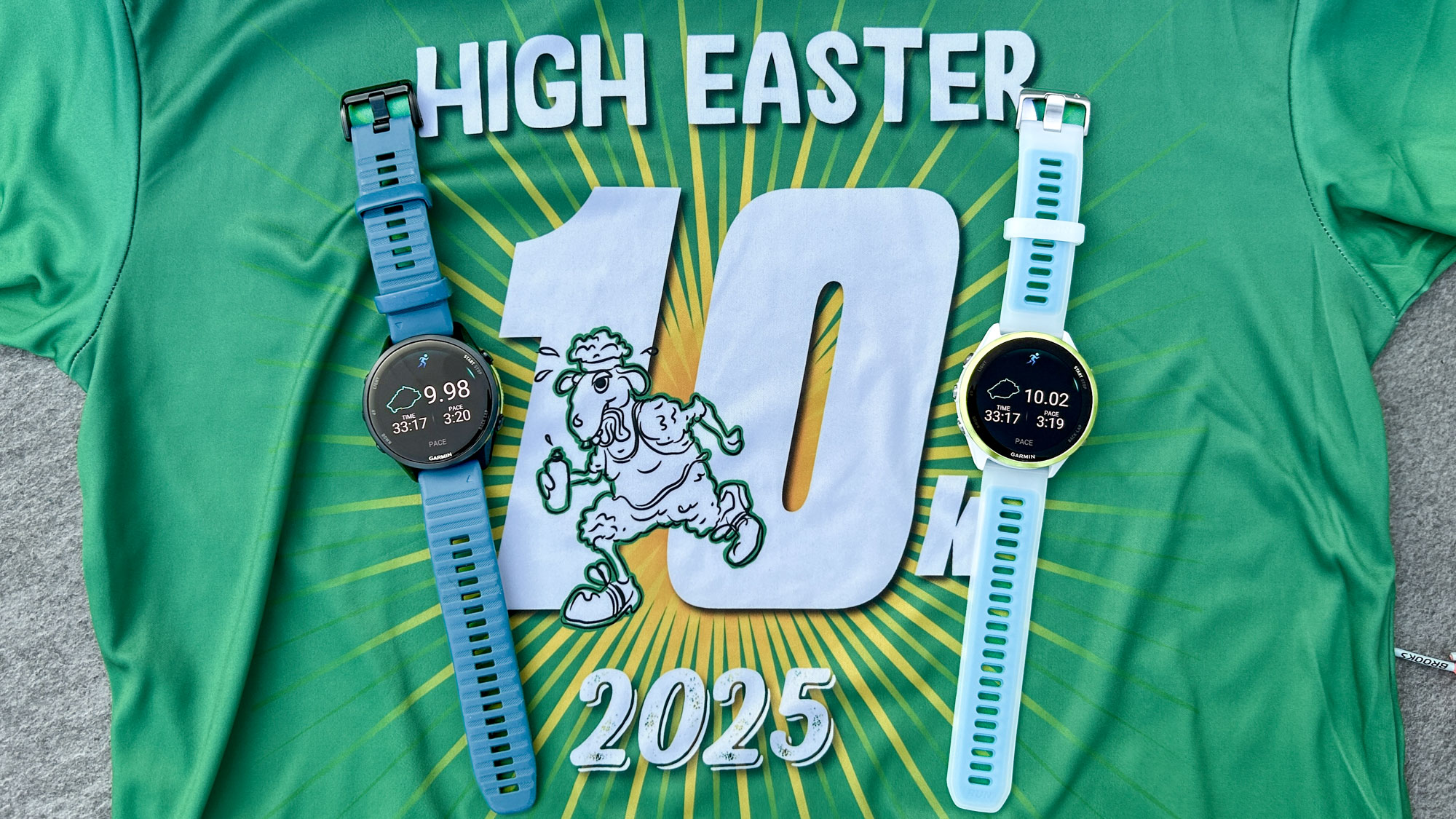
The battery life of the Forerunner 570 and Forerunner 970 has been one of the only disappointments I’ve had with the watches during testing, with both draining rapidly thanks to their bright AMOLED displays.
Garmin has actually already launched an update to improve the battery life of both watches, so hopefully that will help, but if you have the always-on display enabled they will need charging regularly.
On race day, I used the most power-intensive multi-band GPS mode on both watches, and had the always-on screen enabled.
According to the DC Rainmaker Analyzer, during the 10K the Forerunner 970 drained at a rate of 4.8% per hour, which would work out at just under 21 hours of multi-band GPS tracking. The Forerunner 570 drained at a rate of 6% per hour, which is 16.67 hours of multi-band tracking.
On paper the Forerunner 970 is meant to last 21 hours, so this drain is in line with what’s expected, but the Forerunner 570 outperformed its listed battery life of 14 hours of multi-band.
Extra Stats On The Garmin Forerunner 970
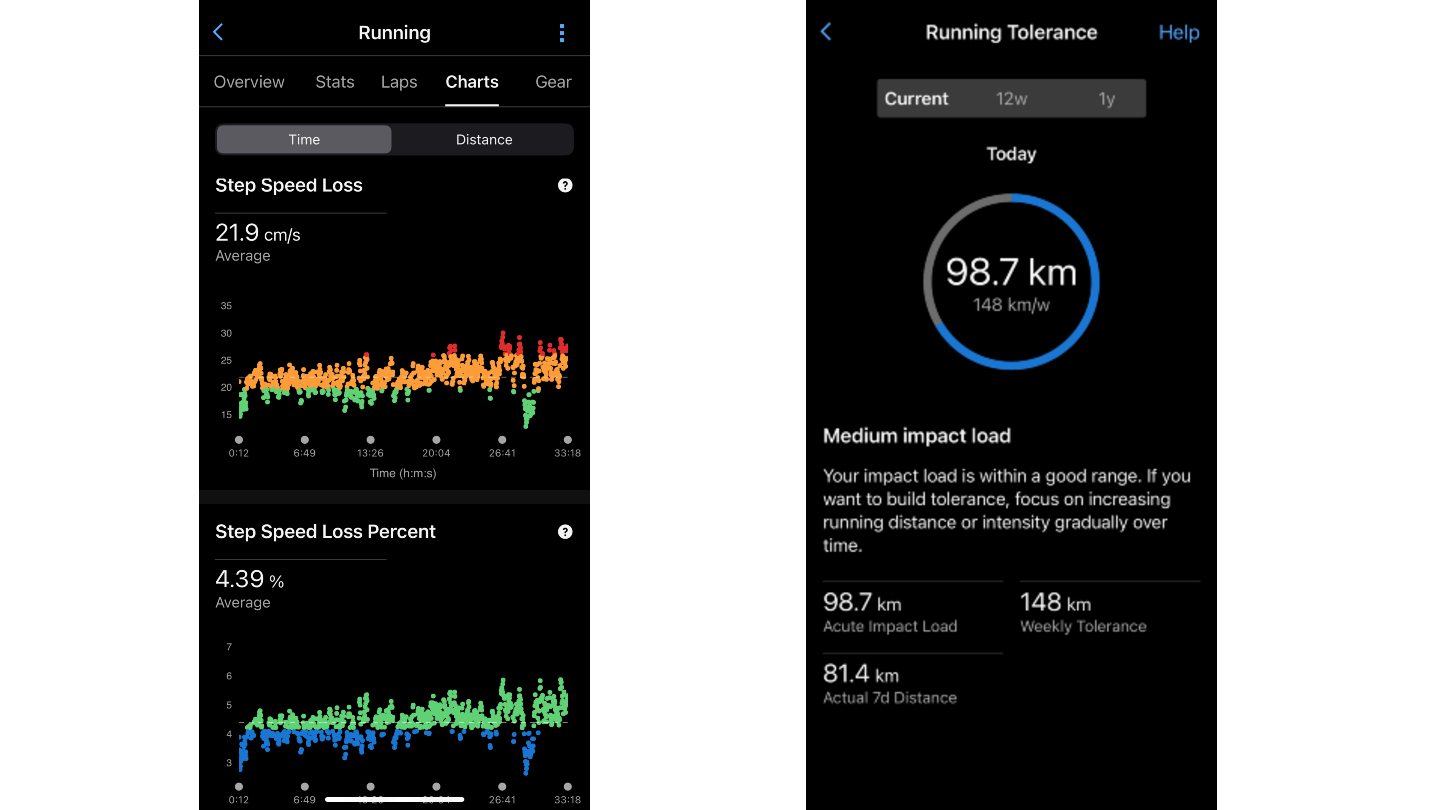
One of the big upgrades you get on the Forerunner 970 compared with the Forerunner 570 is more running stats. These include step speed loss (SSL), an estimate of your running economy, and running tolerance.
To get step speed loss you need a Garmin HRM600 paired to the watch, and it measures how much you slow down with each stride when you land.
You want a lower score here, because slowing down less means you need to put in less effort to speed up again with each stride.
During the 10K race my SSL got bigger as the event went on, which you’d expect — as you tire, your running form tends to get less efficient, and building strength and endurance through training is a way to combat that.
This stat feeds into the overall running economy measurement on the Forerunner 970, which I recently unlocked after several outdoor runs.
Both are interesting, and will hopefully prove useful over time — they’re stats I’d hope to improve during a long training block for a marathon, for example.

Running tolerance is the other new stat on the Forerunner 970 and you don’t need the Garmin HRM600 for this. Running tolerance estimates how much training your body is equipped to handle that week in terms of mileage, based on your training history.
Many runners use total mileage to judge their training load — you don’t want to suddenly increase the total you do in one week as this risks injury. Instead you want to build it up gradually.
What I like about running tolerance on the Forerunner 970 is that it doesn’t just go on straight mileage, but adds the impact of harder runs. So my 10K race was rated as having the same impact of 15km of flat easy running, because I was working harder.
Measuring it like this helps runners to factor in the impact of harder runs, so you’re not just looking at an overall mileage number each week, but also how challenging your runs are, which will help reduce injury risk.
Verdict

With regards to the key performance stats during the 10K race, both the Forerunner 970 and Forerunner 570 performed well, giving accurate distance and pacing stats, and accurate heart rate on the Forerunner 570 compared with the HRM600 chest strap.
You do get longer battery life and some interesting extra stats on the Forerunner 970, though you have to spend $200 more on the watch and then $169 on the HRM600 strap compared with the price of the Forerunner 570.
Neither watch excels on the value front, even if both have been excellent for performance throughout my testing, including at this race. Better value can be found in older watches like the Garmin Forerunner 965, if you don’t need the latest and greatest Garmin on your wrist.
More from Tom's Guide
- I ran a half marathon with the Garmin Forerunner 570 vs. Garmin Forerunner 265 — here’s the winner
- The best Garmin watches to have on your wrist
- Garmin Fenix 8 vs Apple Watch Ultra 2 marathon test

Nick Harris-Fry is an experienced health and fitness journalist, writing professionally since 2012. He spent nine years working on the Coach magazine and website before moving to the fitness team at Tom’s Guide in 2024. Nick is a keen runner and also the founder of YouTube channel The Run Testers, which specialises in reviewing running shoes, watches, headphones and other gear.
Nick ran his first marathon in 2016 and became obsessed with the sport. He now has PBs of 2hr 25min for the marathon and 15min 30sec for 5K. Nick is also a qualified Run Leader in the UK.
Nick is an established expert in the fitness area and along with writing for many publications, including Live Science, Expert Reviews, Wareable, Coach and Get Sweat Go, he has been quoted on The Guardian and The Independent.
You must confirm your public display name before commenting
Please logout and then login again, you will then be prompted to enter your display name.
